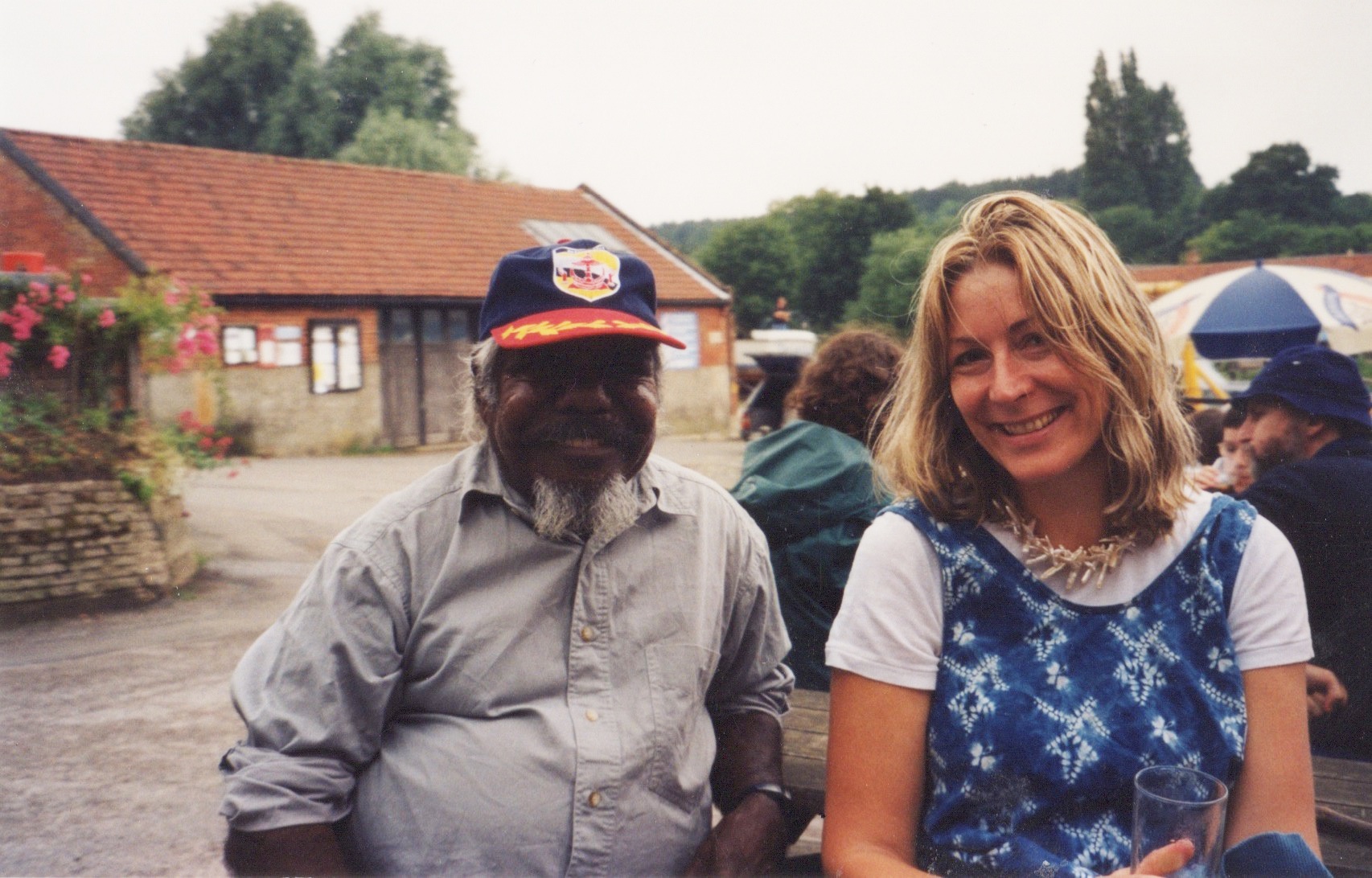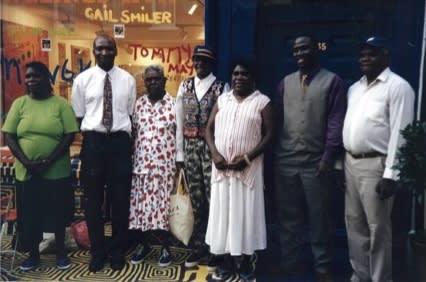If we in London know more about Australian Aboriginal art than we did a few years ago, then it's probably due to the efforts of Rebecca Hossack.
One of Rebecca Hossack's principal motives in setting up her art gallery in 1988, was to introduce a British audience to the riches of Australian Aboriginal art. The Melbourne-born Hossack had been awed and inspired by the emergence of the Aboriginal Desert Painting movement during the 1970s and 80s, and wanted to communicate that knowledge and enthusiasm. Her Central London gallery became the first in Europe to exhibit Aboriginal art.
Over the past thirty-plus years the gallery has mounted annual 'Songlines' seasons of Aboriginal exhibitions in both London and the US. (The name derived from the celebrated novel about Aboriginal culture by Hossack's friend Bruce Chatwin). During that time Hossack has worked closely with all the leading Aboriginal communities: Papunya, Yuendumu, Lajamanu, Balgo Hills, Ampilatwatja, Spinifex, Ngukurr, Yirrkala, Warmun, Fitzroy Crossing, Maningrida, Tiwi, Elcho Island and Borroloola, as well as with individual artists.

There have been ground-breaking solo shows by many of Australia's leading Aboriginal artists including Clifford Possum, Emily Kame Kngwarrey (1910-1999), Robert Campbell Jr. (1944-1993), Jimmy Pike (1940-2002), Owen Yalandja, Lloyd Kwilla, and Janice Murray.

Many of the artists have come over to London for their exhibitions, staying with Hossack and developing enduring ties of friendship and connection. In 1990, Hossack memorably took Clifford Possum to Buckingham Palace to meet the Queen. He presented Her Majesty with one of his paintings. Eight years later she arranged for Jimmy Pike and his wife Pat Lowe to make a similar visit. She took the artists of Fitzroy Crossing to see Captain Cook's birthplace, and the Spinifex painters to visit Brixton.


Hossack is an acknowledged expert in the field. She writes regularly on Aboriginal art in the UK press, and has also contributed entries on the subject to both the Macmillan Dictionary of Art (1996) and the Oxford History of Western Art (2000). She lectures extensively, both in the UK and abroad, for the Arts Society (formerly NADFAS). Between 1994 and 1998, she served as Cultural Attaché at the Australian High Commission in London, a role that allowed her to promote Aboriginal art even more broadly across the UK. And in 2008 she appeared on the BBC TV programme, Beat the Bank, extolling the virtues - and value - of Aboriginal painting.
Rebecca Hossack Art Gallery works closely with public galleries and institutions to promote Aboriginal art, arranging exhibitions in public spaces, and making sales of significant works to - amongst others - the British Museum, the Victoria and Albert Museum, the Gallery of Modern Art, Glasgow, and the De Young Museum in San Francisco.
Rebecca Hossack also assists both private and corporate collectors with acquisitions and curation.
The gallery holds a wide range of Aboriginal stock, including many rare and important pieces. Much (though not all) of it is viewable on this website. For further information - or to make an inquiry - contact info@rebeccahossack.com.





